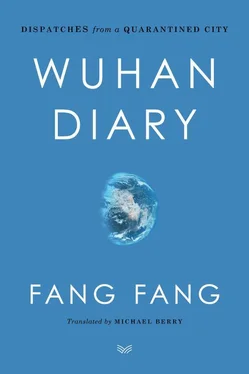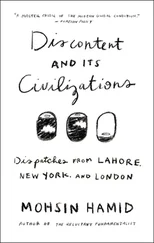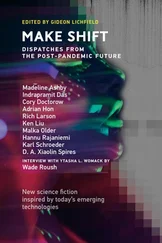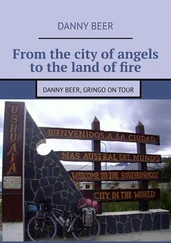This place called Wuhan has always been referred to by people as “River Town.” The reason for that naturally has to do with the fact that the city is located on the banks of the Yangtze River. Actually, “River Town” isn’t at all a bad name for Wuhan. It is the provincial capital of the Hubei Province, sometimes referred to as the “province of a thousand lakes,” because there are at least 100 bodies of water surrounding it. These lakes are like beautiful pearls and jade ornaments adorning the body of Wuhan; when the wind blows, you might even hear the sound of them clinking in the wind. Those old-timers who have lived here long enough can hear it—it is the sound of the billowing river and the ripples on the lakes responding to the wind whipping by.
If you go back to an earlier time, Wuhan was once part of the Kingdom of Chu, which is why Wuhan residents like to refer to this place where they live as “the Land of Chu.” People in Wuhan really worship the Chu. That is because the people of Chu were known for their military spirit; they had an unbridled romanticism and a strong will, which are both qualities that Wuhan natives appreciate. Of course, this could also be because people from Wuhan already have Chu genes inside them, which is why they are so proud to be Chu.
Ever since the concept of “big city” came around, Wuhan has always been one of China’s best-known cities. I thought about it, and I think Wuhan is just behind the big-six cities of Beijing, Nanjing, Xi’an, Shanghai, Tianjin, and Guangzhou. The first three of those cities all have deep cultural roots because they are former capitals; the latter three have more developed economies, thanks to their locations along the coast. Wuhan never served as the capital of China and it is not on the ocean; it is a city on the water, right in the middle of the Yangtze River. The inland province of Hubei where it is located is different from virtually any other province that is located in the frontier region, which makes it only natural to be ranked below those other six cities.
However, amid this vast nation of China, the fact that Wuhan can maintain its position as the “central land” isn’t bad at all. Wuhan’s corridors and streets are like rays emanating out and shining down into every corner of this nation. If you were to draw them across the map of China, they would look like the rays of sunlight shooting out in all directions. And Wuhan represents the sun on that map.
Its being located in the heart of China means that transportation in and out of Wuhan is extremely convenient. No matter where you go, it never feels that far; after all, there isn’t a huge difference between locations near and far in terms of distance. That has become especially true these past few years as more high-speed rail lines and highways have opened up. No matter where you go, you can reach most major cities in China from Wuhan in around four hours by train. It is even more convenient for Wuhan residents with cars to do short road trips; there are even a lot of places you can go on a daytrip. This is something that a lot of Wuhan people are quite proud of. Owing to its central location, Wuhan is also referred to as the “gateway to nine provinces.”
There was a time when people referred to Wuhan (specifically to its Hankou district) as “the Chicago of the East.” That’s because the pace of Wuhan’s development was quite similar to that of Chicago, although that nickname seems to have gradually disappeared over time. These days there are still some people who would very much like to revisit the dream of their city’s being “the Chicago of the East,” but after referring to it like that a few times, there wasn’t much of a reaction so they all stopped calling it that. I’ve never been to Chicago, so I can’t really say where the similarities and differences actually lie.
If Wuhan is a pearl, then the Yangtze River is the necklace that runs through the pearl, as it goes directly through the heart of the city. The largest tributary of the Yangtze, the Han River, cuts through the downtown district of Wuhan where it meets with the Yangtze near the foot of Tortoise Mountain. Those two rivers divide Wuhan up into three towns: Hankou, Wuchang, and Hanyang. All three of these areas are built on the banks of these rivers, and they are designed to twist and curve alongside the flowing water. That’s why most people in Wuhan have such a poor sense of direction. Whenever someone asks for directions elsewhere, most people from Wuhan will respond with phrases like “go up there” or “down there,” or they’ll say things like “walk down that way” or “take that path up.” When they say to “go up,” they are referring to the upstream direction of the Yangtze; when they say, “go down,” they mean to follow the downstream flow of the river. From that detail alone one can tell that the impact of living on the water is something that is deep in the bones of every resident of Wuhan; even when someone haphazardly points somewhere, you can still sense the presence of the flowing river.
There was a time when Wuhan was clearly trying to build up Hankou into a business district, Wuchang into a cultural district, and Hanyang into an industrial district; this was part of a plan to emphasize the different qualities of each town.
The most bustling areas in the city are all north of the city in Hankou. Places like Jianghan Road, Six Crossings Bridge, and the somewhat famous Hanzheng Road are all located here. I remember back a long time ago that when people living in Wuchang and Hanyang wanted to buy gifts for their family, they would always have to take a bus or a ferry to Hankou. These days the business districts in Wuchang and Hanyang are quite robust, yet people still can’t shake the idea that things in Hankou are still better priced and of better quality, so everyone still likes to go north of the river for shopping.
Compared with the bustling Hankou district, Wuchang, located south of the river, is much more subdued. What attracts the most attention about this district is its large number of universities and high-level research facilities. My alma mater, Wuhan University, with its long history and beautiful campus, is located here in Wuchang. Wuhan University has always been highly ranked nationwide for its high level of academic achievements. But following the evolution of the market, several commercial outlets have also popped up in several corners of Wuchang; the district is no longer playing second fiddle to Hankou.
But as for Hanyang, which has always been the industrial district, even today it continues to lag behind Hankou and Wuchang. Sandwiched between the Yangtze and the Han River, it seems to always get less notice than other parts of the city. Its most famous claim to fame was the construction of the Hanyang Arsenal back in the early 20th century. Everyone who ever served in the army is familiar with seeing “Made in Hanyang” stamped on their equipment. Even today, Hanyang continues to be most famous for its manufactured goods. A few years ago Wuhan started developing a brand-new modernized industrial zone and it too is naturally situated in Hanyang.
I’m not sure what year the decision was made to give each district a distinct character; it may have been back when Zhang Zhidong (1837–1909) was the governor of the region. But over time, modernization has transformed all three towns dramatically; yet somehow what makes each district unique has remained, even if those remnants of the past continue to fade over time.
There are few cities out there that have the kind of scenery that Wuhan has been blessed with; the rich Jianghan Plains frame Wuhan on all sides. The plains surround the city with an openness that is adorned by countless beautiful lakes, leaving the entire region with a feeling of brightness and freshness. Those two great rivers—the Han and the Yangtze—rumble through the center of the city and converge, while countless rolling hills adorn both sides of the river like chess pieces in formation. Wuhan is a city with a strong modern sensibility, yet it remains framed by the mountains and rivers and decorated by the scenery of those hundred lakes. The crimson water and the green hills, gulls from Liudi Lake and high-rise buildings, bridges and cableways, mast-like towers and massive flashing LED screens—all converge and blend together in a moving tapestry. Wuhan has been bestowed with incredible natural gifts from the environment; with a bit of careful planning and some reasonable construction projects, Wuhan could easily become one of the most beautiful cities in the world.
Читать дальше



![О Генри - Закупщик из Кактус-Сити [The Buyer from Cactus City]](/books/405348/o-genri-zakupchik-iz-kaktus-thumb.webp)








